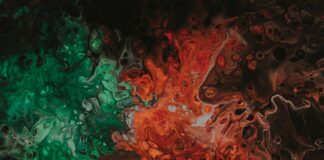Emphasis is a foundational concept in design that serves as a guiding principle for creating visually compelling compositions across various mediums and disciplines. At its core, emphasis refers to the deliberate use of visual elements to draw attention to specific aspects of a design or composition, thereby enhancing its impact and effectiveness. Whether it’s highlighting a focal point, conveying a key message, or establishing visual hierarchy, emphasis plays a pivotal role in shaping the viewer’s experience and perception of a design.
In design, emphasis is not merely about making certain elements stand out; it’s about strategically directing the viewer’s attention to the most important aspects of a composition. By employing techniques such as color, contrast, size, shape, texture, and positioning, designers can create focal points that anchor the viewer’s gaze and guide them through the design in a purposeful manner. Emphasis allows designers to prioritize information, convey hierarchy, and communicate messages effectively, ultimately enhancing the clarity and impact of the design.
Emphasis can take many forms, each serving a specific purpose and contributing to the overall visual appeal of the design. One of the most common methods of creating emphasis is through the use of color. By selecting bold, vibrant colors or contrasting hues, designers can make certain elements pop and stand out from the surrounding elements. For example, a bright red call-to-action button on a website can draw attention and prompt users to take action, while a muted background color can help create a sense of harmony and balance in the design.
Another effective way to create emphasis is through contrast. Contrast refers to the difference between elements in a design, whether it’s in terms of color, size, shape, or texture. By juxtaposing elements with contrasting characteristics, designers can create visual interest and make certain elements stand out more prominently. For instance, using a large, bold font for headlines against a background of smaller text can create a strong contrast that emphasizes the importance of the headline and draws the viewer’s attention to it.
Furthermore, emphasis can be achieved through variations in size and scale. By enlarging or shrinking certain elements within a composition, designers can create hierarchy and establish a clear focal point. Larger elements tend to command more attention and are perceived as more important, while smaller elements recede into the background. This technique is commonly used in typography, where headings and subheadings are often rendered in larger sizes to indicate their significance relative to body text.
Moreover, emphasis can be created through the strategic use of typography. Typeface selection, font weight, and styling all play a role in determining the prominence of text elements within a design. Bold, italic, or underlined text can draw attention and add emphasis to specific words or phrases, while variations in font size and style can help create hierarchy and structure within the text. By carefully choosing and styling typography, designers can enhance readability and guide the viewer’s eye through the content.
In addition to visual elements, emphasis can also be achieved through the strategic positioning of elements within a composition. Placing important elements in prominent locations, such as the center of the design or at key focal points, can help draw attention and create a sense of balance and harmony. Conversely, elements positioned off-center or in less conspicuous areas may be perceived as less important or secondary to the overall composition.
Furthermore, emphasis plays a crucial role in establishing visual hierarchy within a design. Visual hierarchy refers to the arrangement of elements in a way that indicates their relative importance and guides the viewer’s eye through the composition. By varying the size, color, contrast, and positioning of elements, designers can create a hierarchy that directs attention from the most important elements to the least important ones, facilitating easier navigation and comprehension of the design.
Another important aspect of emphasis is its role in creating focal points within a design. A focal point is a specific area or element that immediately draws the viewer’s attention and serves as a focal point for the composition. By strategically placing emphasis on certain elements, such as headlines, images, or call-to-action buttons, designers can create focal points that anchor the viewer’s gaze and invite further exploration of the design. Focal points help to capture the viewer’s attention and engage them with the content, making the design more memorable and impactful.
Moreover, emphasis is not just about making certain elements stand out; it’s also about creating balance and harmony within the overall composition. Too much emphasis on one element can create visual clutter and overwhelm the viewer, while too little emphasis can result in a lackluster and unengaging design. Designers must strike a careful balance between emphasizing key elements and maintaining overall coherence and balance in the design. By carefully considering the placement and intensity of emphasis, designers can create designs that are visually appealing, engaging, and effective in communicating their intended message.
Emphasis is a fundamental principle in design that involves the strategic use of visual elements to draw attention to specific aspects of a composition. Whether it’s through color, contrast, size, typography, or positioning, emphasis plays a crucial role in guiding the viewer’s eye, establishing hierarchy, and creating focal points within a design. By understanding how to effectively apply emphasis, designers can create visually compelling compositions that capture the viewer’s attention, communicate messages effectively, and leave a lasting impression.
Furthermore, emphasis extends beyond the realm of visual design and encompasses other sensory modalities such as auditory and tactile elements. In music composition, emphasis is achieved through variations in rhythm, volume, and instrumentation, with certain notes or phrases standing out as focal points within the composition. Similarly, in tactile design, emphasis can be created through variations in texture, surface finish, or material properties, with certain tactile elements drawing attention and inviting interaction. By considering the multisensory aspects of design, designers can create more immersive and engaging experiences that resonate with users on a deeper level.
Moreover, emphasis plays a critical role in branding and marketing, where it helps companies differentiate themselves from competitors and create memorable experiences for customers. Through logos, packaging, advertisements, and other marketing materials, emphasis is used to communicate brand identity, highlight product features, and evoke emotional responses. For example, a brand may use bold colors and striking imagery to emphasize its unique selling propositions and create a strong visual identity that resonates with its target audience. By strategically emphasizing key brand elements, companies can establish strong brand recognition and loyalty among consumers.
Additionally, emphasis has a profound psychological impact on viewers, influencing their perception, emotions, and behavior. When elements are emphasized effectively, they capture the viewer’s attention and evoke a desired response, whether it’s curiosity, excitement, or trust. For example, a well-designed website with clear focal points and strong visual hierarchy can create a sense of trust and professionalism, encouraging users to engage with the content and take desired actions. By understanding the psychological principles behind emphasis, designers can create designs that resonate with their target audience and achieve their intended goals.
Furthermore, emphasis is not static; it evolves over time in response to changes in technology, culture, and aesthetics. Design trends such as minimalism, flat design, and brutalism have influenced the way emphasis is used in contemporary design. While some trends prioritize simplicity and restraint, others embrace boldness and experimentation. For example, minimalism often relies on subtle emphasis and negative space to create a sense of calm and clarity, while brutalism embraces bold typography and harsh contrasts to create a raw and unfiltered aesthetic. Regardless of the prevailing trends, emphasis remains a timeless principle that is essential for creating impactful and memorable designs.
In conclusion, emphasis is a fundamental principle in design that plays a crucial role in guiding the viewer’s attention, organizing information, and communicating messages effectively. Whether it’s through color, contrast, size, typography, or positioning, emphasis helps create focal points, establish hierarchy, and evoke emotional responses within a design. By understanding how to effectively apply emphasis, designers can create visually compelling compositions that capture the viewer’s attention, communicate messages effectively, and leave a lasting impression.














